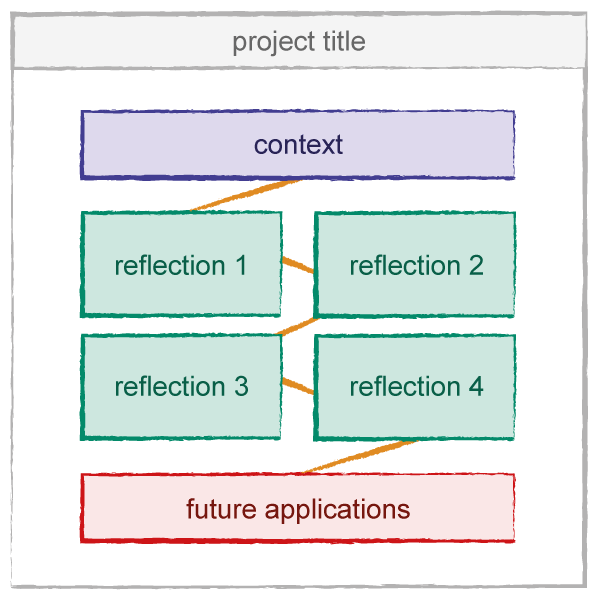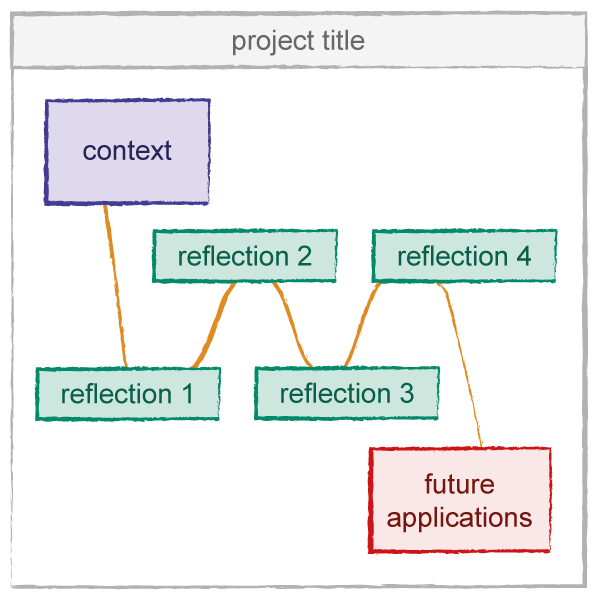Studio knowledge object
The studio knowledge object records learning and insights gained in a design studio course.
These insights may be as small as learning a new method for improving your workflow efficiency, or as profound as a change in perspective on design or interest in a new career direction. Your specific learning moments are individual to you. By articulating them in words and demonstrating them through design you can communicate the value of your learning to others. This is the purpose of the knowledge object.
Writing a studio knowledge object - Printable Version (Interactive PDF, 770 KB)
The SKO text has three main sections:
- Contextualising the field of inquiry that the studio investigates gives a non-expert reader an understanding of the key issues and approaches that your reflection relates to.
- Reflecting on your learning identifies key insights and learning from the studio, describing specific activities, concepts or approaches and evaluating their impact. You will probably cover 2-4 insights in your SKO.
- Proposing future application speculates about how you can transfer this new knowledge to other projects and how it might affect your future practice.
The way that you combine these elements will help to tell your story, consider:
- text (title, headings and paragraphs)
- images (of your work, diagrams or other content)
- design (type and graphic elements)
- layout (arrangement)
All elements should reflect the content of your studio and the learning you have gained. Some example layouts are shown below.




